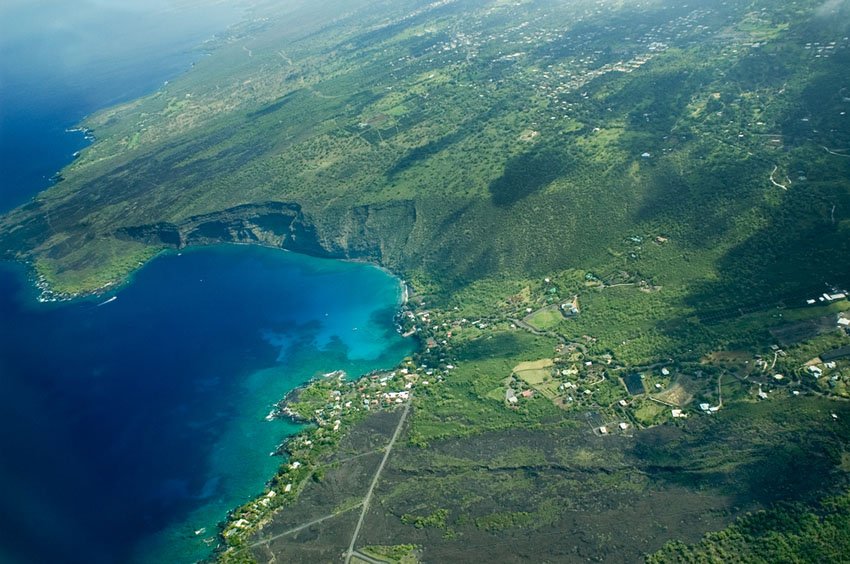Kealakekua

Kealakekua is a historically significant town on the Big Island of Hawaii, best known as the landing site of Captain James Cook in 1779. Overlooking the stunning Kealakekua Bay, the area is renowned for its marine conservation, excellent snorkeling, and dramatic sea cliffs that once served as royal burial grounds.
Kealakekua, Big Island
The historic town of Kealakekua is most famous for being the landing spot of Captain Cook, who sailed into Kealakekua Bay in January 1779 and was killed here a month later. A monument on the shore memorializes his death.
The town is surrounded by the 600-foot (183 m) high Pali Kapu o Keoua sea cliffs, where the royal ali'i (high chiefs) were buried in ancient Hawaii. At the base of the cliffs is Kealakekua Bay, one of the best snorkeling and diving spots in all of Hawaii.
A declared Marine Life Conservation District, the bay is home to dolphins, sea turtles and a wide variety of other tropical fish. Kayaking and snorkeling to explore the bay are the two most popular activities here.
Key Features of Kealakekua
- Captain Cook Monument: Marks the site where Captain James Cook was killed in 1779
- Marine Life Conservation District: Kealakekua Bay is protected and home to dolphins, turtles, and vibrant reef life
- Popular water activities: Known for kayaking, snorkeling, and boat tours across the bay
- Pali Kapu o Keoua cliffs: Towering sea cliffs historically used as burial sites for Hawaiian chiefs
- Scenic natural beauty: Dramatic coastline with crystal-clear water and lush vegetation
- Population: 2,307 (2020 Census)
- Zip code: 96750


Frequently Asked Questions
Why is Kealakekua historically important?
Kealakekua is where Captain James Cook arrived in 1779 and was later killed. A monument now marks the location of his death along the bay's shoreline.
Is Kealakekua Bay good for snorkeling?
Yes, it is considered one of the best snorkeling spots in all of Hawaii, known for its crystal-clear waters and abundant marine life.
How can I reach the Captain Cook Monument?
You can reach it by kayak across the bay, by boat tour, or by hiking down the Ka'awaloa Trail, which is about 4 miles round-trip.
What are the Pali Kapu o Keoua cliffs?
These 600-foot cliffs surround Kealakekua Bay and were once used as sacred burial sites for Hawaiian ali'i (royalty).















